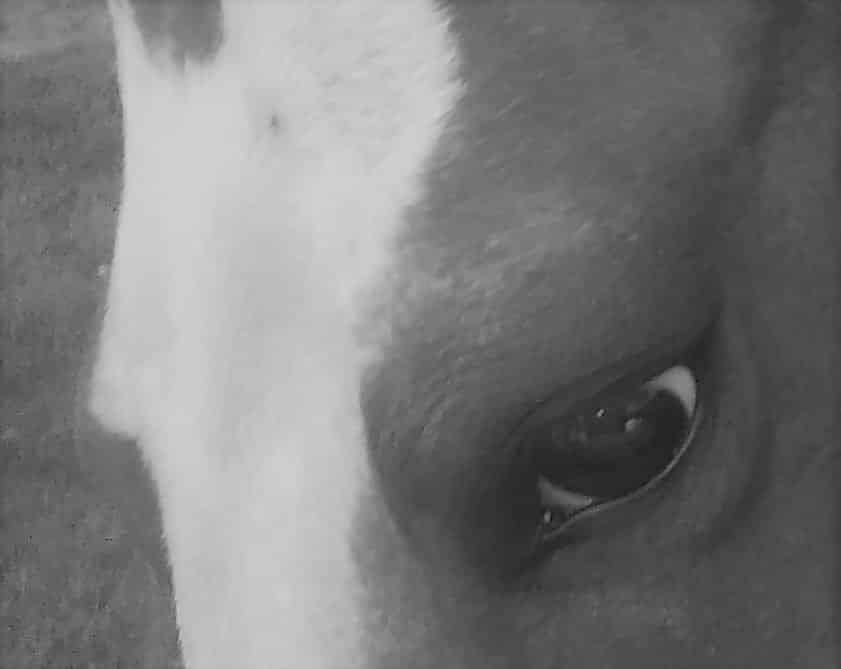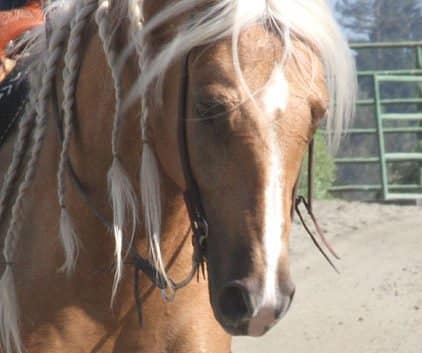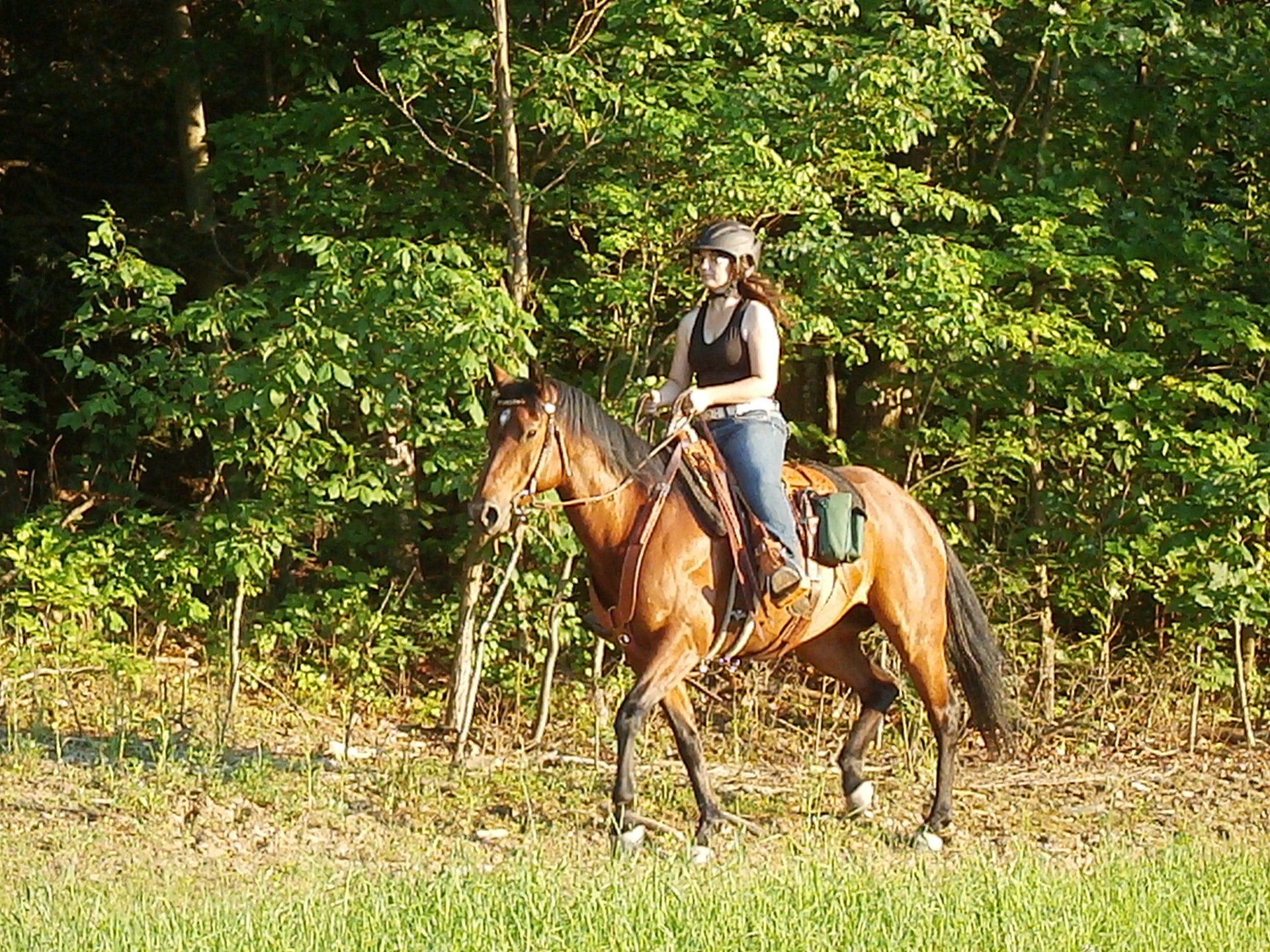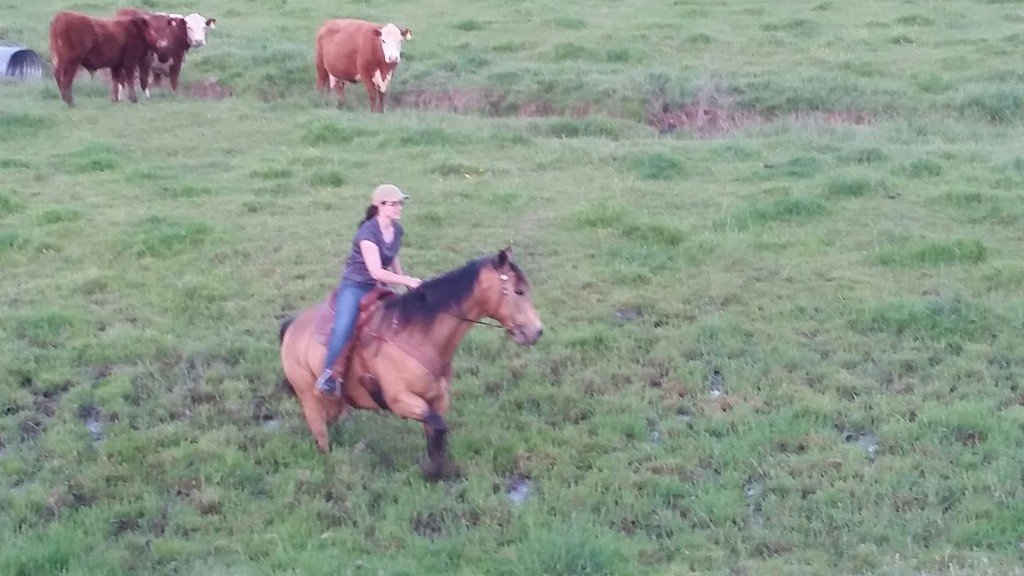
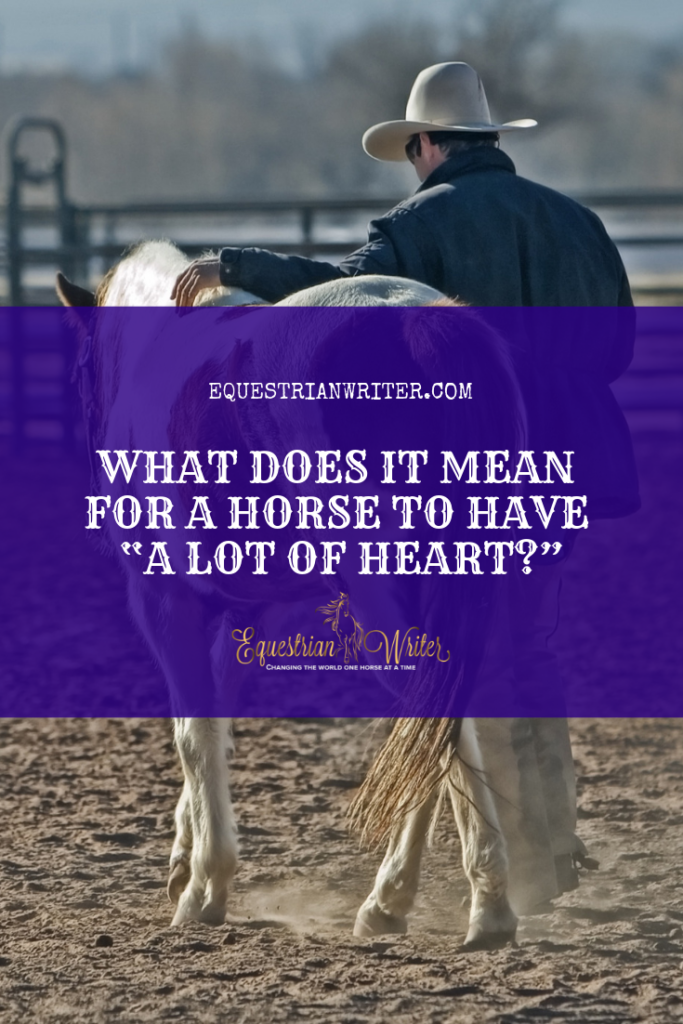
Have you ever been mystified when hearing a trainer or rider comment that they like a horse with “a lot of heart?” This is a phrase that is often thrown around with little thought for what it means.
What is “heart” and how does a horse get it?
A “horse with heart” is a horse that will keep working even when — or especially when — the going gets tough. They are also called a horse with “a lot of try” because they never give up and will go to extraordinary lengths to please you. In a human, we would label it as bravery, confidence, nerves of steel, or any number of other clichés. Whether the situation is uncertain footing, bad weather, or any number of unexpectedly dangerous situations, a horse with “heart” and “try” never gives up until they find a way through it. So, is this something that some horses are magically born with while others just give the “try” gene a pass? No. There is no special “try” gene, no magical bestowal of “heart.”
[clickToTweet tweet=”A “horse with heart” is a horse that will keep working especially when the going gets tough.” quote=”A “horse with heart” is a horse that will keep working especially when the going gets tough.”]
Every horse I have met has had that kernel of “heart” somewhere beneath layers of training and human meddling. I know what you’re thinking: “But there was this horse I knew/heard about who was so bad-tempered and had no ‘heart’.” There is an exception to every rule, so I am open to the possibility that there is a horse out there somewhere who is just that bad-tempered and contrary. But, in my experience, there is always an explanation.
Poor training stamps the “heart” out of a lot of good horses, destroying their willingness to work.
My mare Moose was not always so willing and eager to please. It has been a long road for both of us and we still have a long ways to go, but I have finally made headway in breaking down those walls she constructed around her “try.”
I bought Moose as a halter broke 6-year-old. She had been severely neglected for at least 2 years and what little 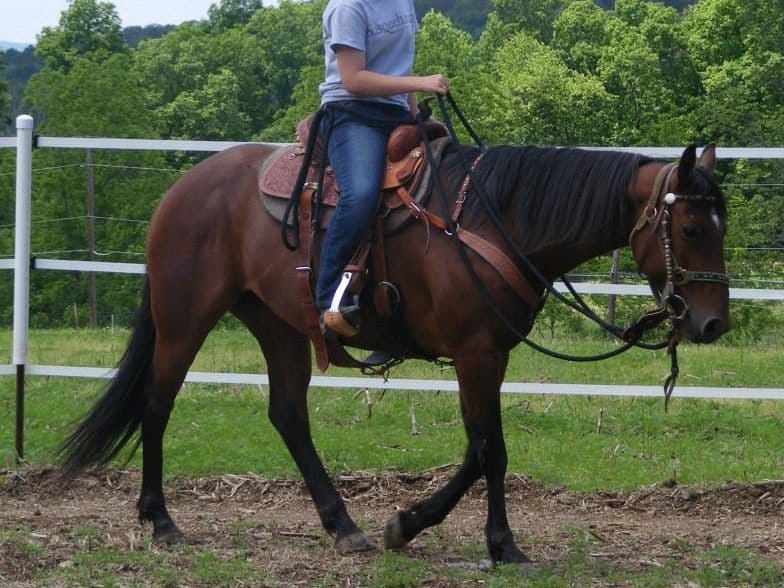 training she did have soured her on work and humans altogether. She was not beaten or abused that I know of, but she was bored out of her mind and no one took the time to teach her anything in a way she could understand without being bored.
training she did have soured her on work and humans altogether. She was not beaten or abused that I know of, but she was bored out of her mind and no one took the time to teach her anything in a way she could understand without being bored.
Her well-meaning owner tried training her with one of those natural horsemanship DVD kits, but failed to realize that the horse she was dealing with didn’t need that much repetition and doesn’t like being coddled or talked down to, so to speak. Moose was labeled as belligerent and difficult to handle. She came with a whole truck load of warning labels including “bucker” and “rearer.” I decided to take a chance. It turns out that the saddle they’d attempted to saddle break her with was way too narrow for her stocky foundation quarter horse shoulders and some genius stuck a big old leverage bit in her mouth without even trying a snaffle. She tried to say: “that hurts.” They didn’t listen. Then they wondered why she was “untrainable.”
Starting at ground zero
I got a horse that was tired of giving without receiving anything in return. Like so many horses, she had completely shut down mentally and refused to try. She just set her jaw, dug in her heels, and said “no” to absolutely everything whether she knew what I was asking or not. I tried some of the ground work exercises she knew hoping to let her gain confidence through already knowing the answer. These attempts only angered her more, showing me just how sour she had become towards what little training she did have. I tried new exercises, but she didn’t want to offer any behaviors or attempts to figure out what I wanted because experience taught her that there was no right answer and no end once she found the answer.
She was so sluggish, lazy and belligerent. The biggest hurdle in this type of situation is getting through to them that it is okay to try and that learning will be rewarded. Getting them to learn that trying will be rewarded rather than reprimanded is the key. The least “try” they will give you has to be rewarded to start. In the beginning, Moose didn’t even react well to praise. She didn’t want treats or petting or even a simple “good girl.” She just wanted to be able to stand still. That became her treat. I stopped asking anything and just let her stand quietly and think about what she had just accomplished.
Looking for that breakthrough
Just three months after I brought Moose home we suffered our first major setback. Moose injured her right eye in a 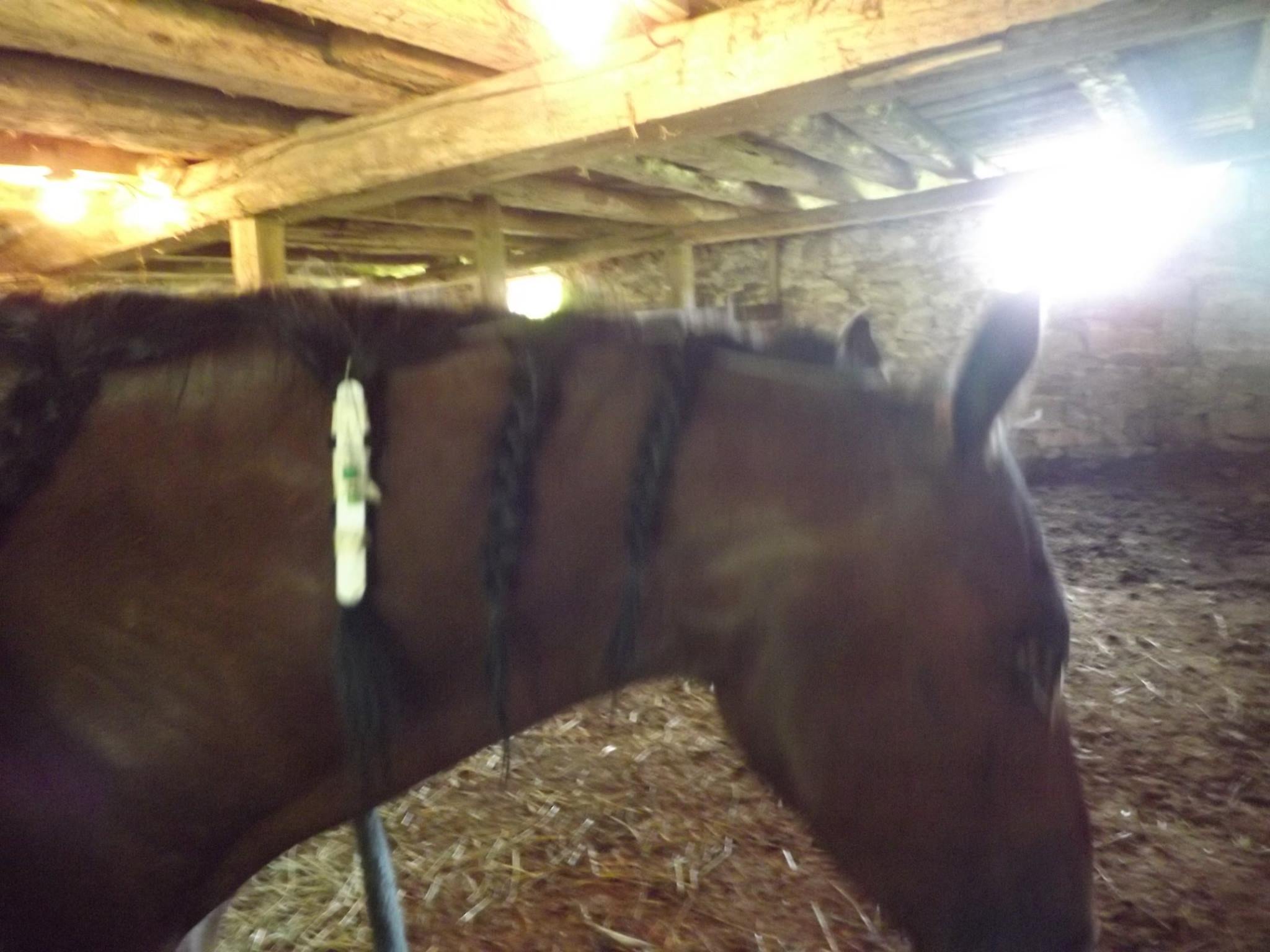 freak pasture accident and we had to rush her 2 hours to the New Bolton Center at the University of Pennsylvania for an emergency corneal transplant. She spent three days in the hospital. When she returned home her eyelids on the right eye were temporarily sewn shut to stabilize the injury and she was on 24/7 stall rest. Medication was administered every 4 hours around the clock for 2 weeks. She was only allowed short hand walks outside under strict supervision. With her right eye completely useless, she was forced to rely on me to make sure she did not bump into or step on anything on that side. Her independent nature did not make it easy, but we worked it out. She slowly came to trust my direction.
freak pasture accident and we had to rush her 2 hours to the New Bolton Center at the University of Pennsylvania for an emergency corneal transplant. She spent three days in the hospital. When she returned home her eyelids on the right eye were temporarily sewn shut to stabilize the injury and she was on 24/7 stall rest. Medication was administered every 4 hours around the clock for 2 weeks. She was only allowed short hand walks outside under strict supervision. With her right eye completely useless, she was forced to rely on me to make sure she did not bump into or step on anything on that side. Her independent nature did not make it easy, but we worked it out. She slowly came to trust my direction.
This set back eventually turned into a breakthrough. I spent hours in the stall with her just sitting there, not asking her to do anything, just keeping her company. Sometimes I would groom her and she came to love having her mane brushed. Other times I would just sit beside her and read. This developed a relationship of trust that has been essential to getting her to want to work for me.
Not every breakthrough needs to be so dramatic. Many times it sneaks up on you, gradually building until one day you realize you’ve taken that first step towards trust. Trust is not something to be won through bribes and cuddles. It takes work and respecting your horse for the magnificent creature he is.
The genetic component
I have spent nearly 2 years un-training all of Moose’s previous experience. I had to fight her every step of the way and even after I started gaining her trust she remained resistant. This is where the genetic component comes in. While I believe that every horse is born with “heart,” some are born with more than others. Moose has “heart” in spades, but she comes from a bloodline that is known for being difficult to work with. It is not that she doesn’t want to work, it is that she is too smart for her own good and is very sensitive. But once you gain her trust and convince her that you are worthy of her effort, she will give you the world.
She has become utterly fearless about figuring out what crazy thing it is I want this time. Even when it goes against her natural instincts, she knows that so long as she keeps trying, she will have as long as she needs to figure it out. Having a horse that trusts she will eventually figure out the right answer no matter how nutty the situation I’ve put her in is priceless. She knows I won’t set her up to lose — but I better not slip up because she holds a grudge like nobody’s business and she has a very long memory.
This is where so many people make the biggest mistake. They see a horse that is stubborn and belligerent and assume that they were just born that way. Too many people would not have had the patience to keep chipping away at the walls that Moose and so many horses like her have built so high and they end up never finding the beautiful, talented horse lurking beneath the surface.
So, this brings us to the question that you might already be asking:
Can all these horses that have had the “heart” stamped out of them be turned around or does there come a point where they are too far gone to be saved?
I believe that most can be saved to a certain degree, certainly more than most people would think. However, I also believe that there are some tough cases that are not so easy as patience and perseverance.
Moose is one of the lucky ones. She will never lose some of the mental scars from her early years, but she is improving every day. Under the wrong circumstances though, Moose could have been pushed too far. It is a balancing act that I will have to juggle for the rest of her life. Some horses seem to never lose their “try.”
My mini, Starlight, has more “heart” then any horse I’ve ever met. I have known him since he was 2. He is now 17 and I have not seen his “try” falter even once.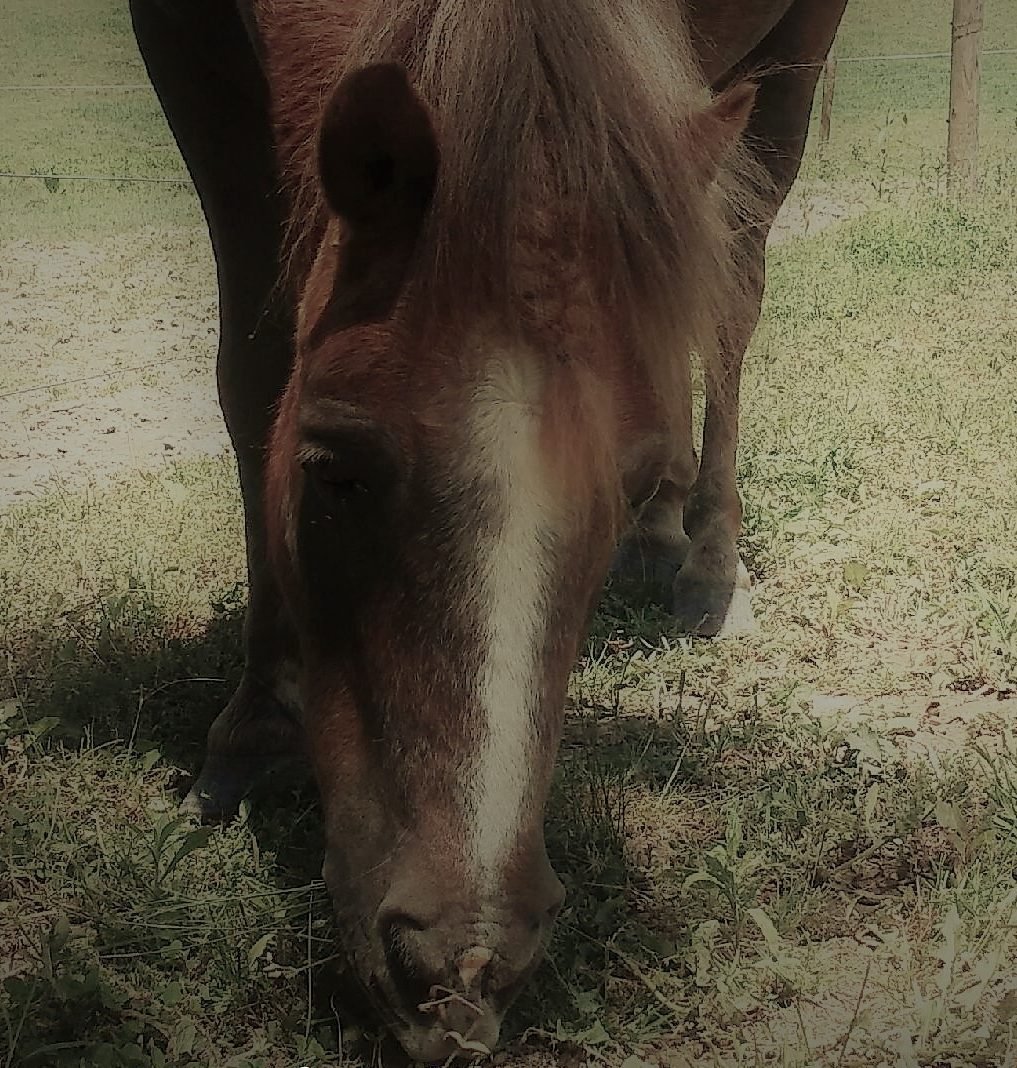
Then there is the other extreme of Tex, a gelding I had briefly before Moose, who was so soured by abuse and starvation that he would lash out violently and charge me any time I asked him to do something. I finally had to rehome him to someone better equipped to handle his violent temper because it was just too dangerous. There are some who might say that he could not be saved. I still believe that there is hope. I was not in a place to be able to help him, but I believe, under the right circumstances, he might have a chance. He certainly would have had a chance if someone would have gotten to him sooner. Unfortunately, I may never know in his case.
The Heart of the Matter
There are a lot of great horses out there who are just misunderstood. This is not to say that all they need are hugs and cuddles to make everything ok. It is a much deeper issue than that.
As trainers, it is our obligation to put the mental and physical needs of the horse first. (You might be thinking: “That’s great, but I’m not a trainer.” If that’s you, you may want to go back and read my article on why every rider is a trainer.) Just because we as humans need to practice something over and over again to feel comfortable performing in the show pen does not mean our horses need the same thing. Finding new and creative ways to practice the same maneuvers is part of our job as trainers so we do not sour our horses.
Did you enjoy this article? Share and join the conversation on Twitter!
[clickToTweet tweet=”Every horse has “heart” somewhere beneath layers of training and human meddling.” quote=”Every horse has “heart” somewhere beneath layers of training and human meddling.”]






